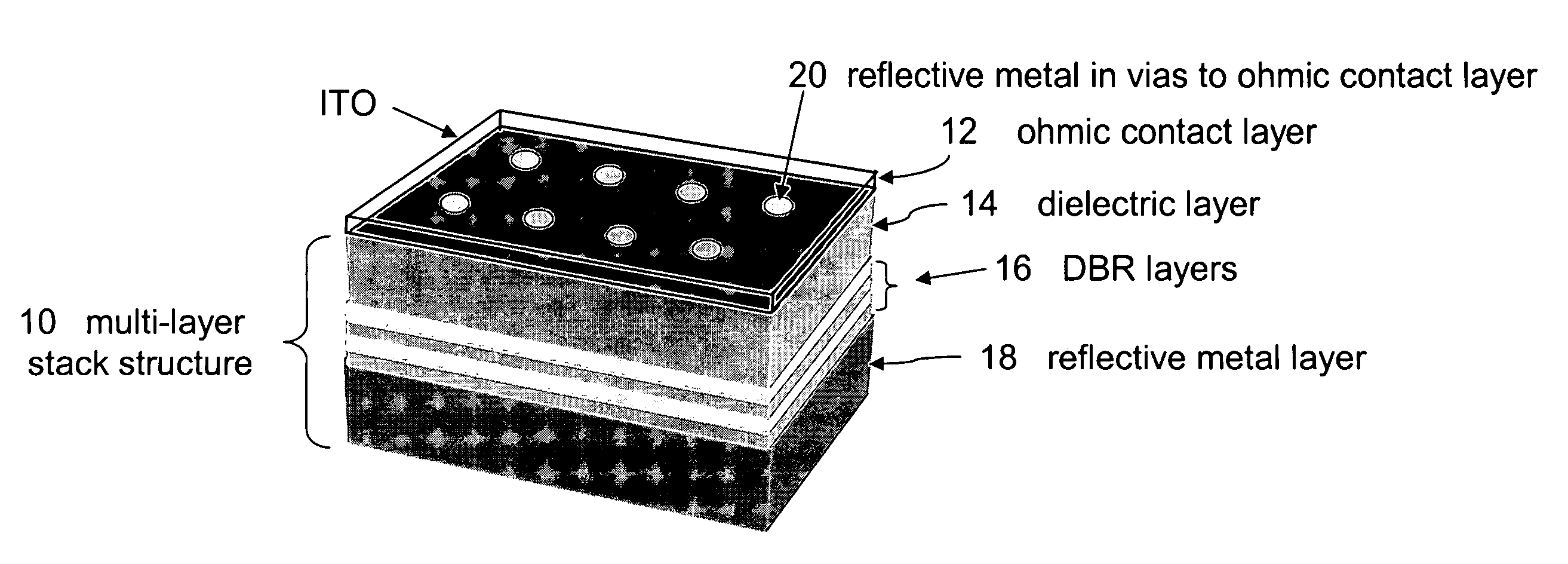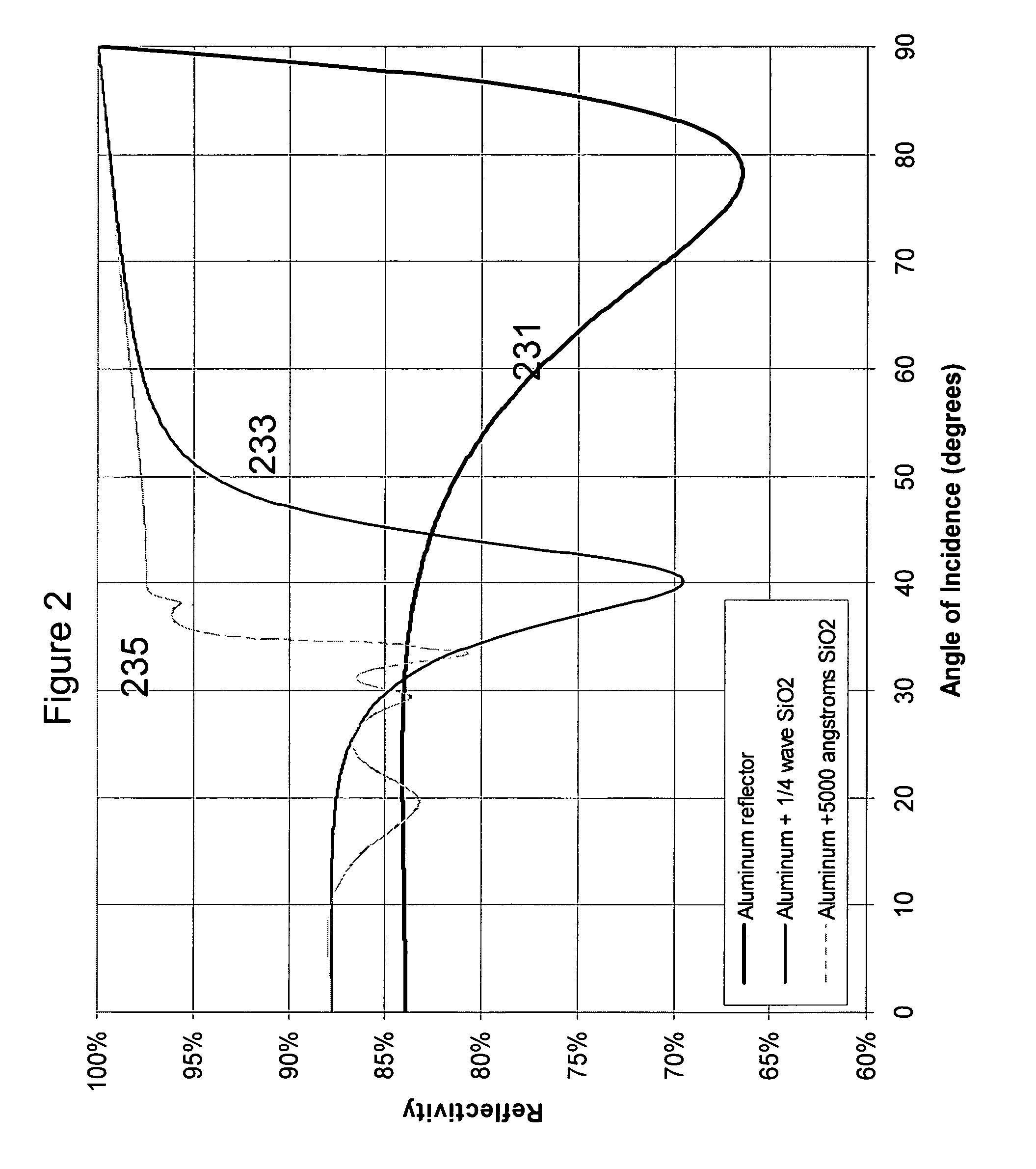Highly reflective mounting arrangement for LEDs
a technology of leds and mounting arrangements, applied in the direction of basic electric elements, electrical apparatus, semiconductor devices, etc., can solve the problems of not providing for high reflectance for light incident, contact absorption still too high to achieve very high light absorption, and increase the chance of reabsorption and loss, so as to improve the overall device light emission and reduce the effect of additional manufacturing costs
- Summary
- Abstract
- Description
- Claims
- Application Information
AI Technical Summary
Benefits of technology
Problems solved by technology
Method used
Image
Examples
Embodiment Construction
[0022]The present invention is a multi-layer arrangement which provides distinctive improvements over the prior art including, but not limited to, ohmic contacts to an LED, providing high reflectivity for light at all angles, low and, preferably, uniform contact resistance, and improved reliability. FIG. 1 shows a cross-sectional view of one embodiment of the present invention. In particular, FIG. 1 illustrates a stack structure to make ohmic connection to p-type AlInGaN alloys; one embodiment of LED semiconductor layers are shown in FIG. 4. A multilayer structure 10 includes a transparent, ohmic contact layer 12 for making a low-resistance, uniform contact to a p-type semiconductor material, for example AlInGaN. One example of a transparent, ohmic contact layer 12 is ITO, commonly formed by electron beam evaporation and preferably in the range of 50-400 nm thick. The thickness of a transparent, ohmic contact layer 12 is chosen to be sufficiently thick to provide for low-resistance ...
PUM
 Login to View More
Login to View More Abstract
Description
Claims
Application Information
 Login to View More
Login to View More - R&D
- Intellectual Property
- Life Sciences
- Materials
- Tech Scout
- Unparalleled Data Quality
- Higher Quality Content
- 60% Fewer Hallucinations
Browse by: Latest US Patents, China's latest patents, Technical Efficacy Thesaurus, Application Domain, Technology Topic, Popular Technical Reports.
© 2025 PatSnap. All rights reserved.Legal|Privacy policy|Modern Slavery Act Transparency Statement|Sitemap|About US| Contact US: help@patsnap.com



